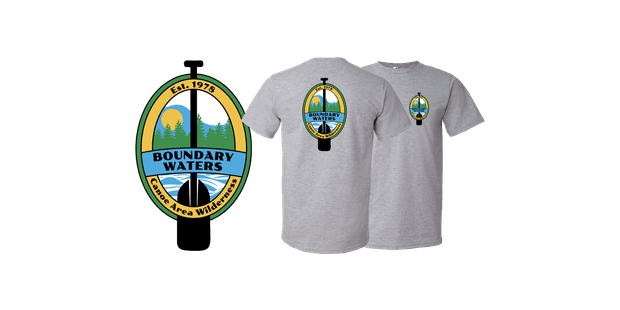Rules for Canoeing Big Water
You're canoeing a big lake and come to a large bay. It's one mile if you head straight across, or 10 miles if you follow the shore. There are some breaking waves, but they look manageable. Should you paddle the bay or take the slow safe route near shore?
The answer is easy if you're ahead of schedule. Otherwise, the pressure of "being where you're supposed to be, when you're supposed to be" may encourage bad choices. I'd be lying if I said that, when pressed for time, I always make smart moves. Still, I like to think that the risks I take are tempered by these rules:
1. Trim for Travel
A properly trimmed, well paddled canoe will ride huge waves. Level trim is the rule, except in strong winds where the windward end may be weighted slightly down (1-2 inches are enough). To check trim, pour some water into the canoe and see which way it flows.
2. Make like a sailboat and tack to your point (see illustration)
You want to go from A to B. If you head straight across, the wind will push you towards D. So make like a sailboat and tack towards C. The wind will carry you to B.

~Get the BWCAW Tee~
With over 1,090,000 acres of wilderness area, the BWCAW is a paddler's paradise.
3. Make your open water crossings short and fast
Plan to rest at a wind-protected spot every 15 to 30 minutes (study the map and identify a safe haven). Then, pour on the coal! I question any headwind run of over half-a-mile, or five miles, if the wind is at my back. Those who have paddled with me will smile when they read this because they know I don't always follow my own advice.
4. Lighten the ends.
If the canoe begins to take on water, lighten both ends. The bow person should kneel behind the seat and the stern paddler should nudge the stern thwart. Do maintain your current (nose up or down) trim when you move amidships.
5. Get a splash cover.
A spray cover keeps out waves and cuts wind considerably. My book, Expedition Canoeing provides plans for making covers (see photo above). Or, you can buy one, based on my design, from Cooke Custom Sewing (www.cookecustomsewing.com)
6. Partners paddle on same side.
It can be smart for both partners to paddle on the same side of the canoe-- and for the stern person to "rudder". Paddling on the same side--in unison--is the right medicine when you can't hold the canoe on course in a beam wind. Or, the bow person can paddle hard while the stern person alternately paddles and rudders.
Stern ruddering, while the bow person paddles, is often the safest way to maintain control in heavy waves, especially, when the canoe begins to surf, which can be frightening.
7. Head directly into waves when you beat upwind.
Quartering waves at a 30 degree angle to "keep out splash" is text book advice for good paddlers who have a relatively straight-keeled canoe that is easy to hold on course! A canoe on a quartering tack is constantly on the edge of broaching (turning side-ways) to the wind. The stern person must be in control, which may mean holding a strong rudder while the bow person paddles.
8. Running parallel to waves can be a good plan.
How well canoes run big waves is more a function of wave length than wave size. If you have a 17 foot canoe and the waves are spaced 12 feet apart, you're in for a wet ride. Now, "quartering" must come into play or you'll swamp. If "head-on" running (try this first) is impossible and you can't hold a quartering course, try this:
When the nose descends into a wave trough, quickly turn the canoe broadside and lean and brace your paddles away from the oncoming waves. Once in the wave trough, paddle forward. Pretend you're riding a horse and you'll be fine.
Cliff Jacobson is a professional canoe guide and outfitter for the Science Museum of Minnesota, a wilderness canoeing consultant, and the author of more than a dozen top-selling books on camping and canoeing. www.cliffcanoe.com
Related Articles
How many of you have ever heard that paddle craft (vessels under oars according to the Navigation Rules)…
Even though they are flipping over, missing their gates and failing their maneuvers, they still look…
Driving a car safely involves much more than merely focusing only as far ahead as the taillights of…
The following is a modified excerpt from Ken Whiting's book, 'The Ultimate Guide to Whitewater…




